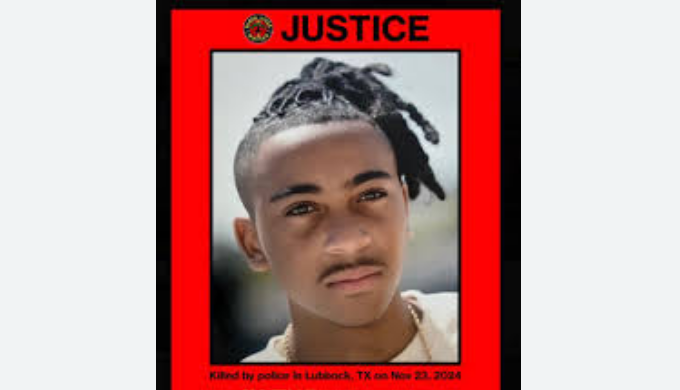Republicans deplore President Obama for using executive orders; FDR issued 3,522
[Commentary]
When President Obama issued his Executive Order preventing the deportation of young immigrants brought to this country illegally by their parents, this act engendered great enmity by Republicans.
They’ve never liked him to begin with and have vacillated on immigration reform though several influential Republicans favor some form of comprehensive legislation.
As such, a cliché spoken by Secretary of State Hillary Clinton is a good barometer of Mr. Obama’s opponents’ behaviors. Mrs. Clinton once said, “If President Obama walked on water,” former U.S. Ambassador to the U.N. under President Bush, “Bolton would say it’s because he could not swim.”
Whether this is purposeful or not, Republican behavior is a demonstrated fact. Even the killing of Osama bin Laden and disruption of his terror network could not garner much praise from Republicans who only blinked momentarily then closed their eyes. The “blink” was necessary otherwise people would see Republicans for the real hypocrites they truly are.
Republicans accused Obama of being a “tyrant” for leading rather than rolling up and accepting their obstructionism. In reality, Executive Orders date back to George Washington, who issued eight; Abraham Lincoln issued 48, including the Emancipation Proclamation, and Ulysses Grant, who issued 217.
Frustrated, a Republican lawmaker has even referred to the president as “stupid.” Well, he’s a Doctor of Law, Constitutional scholar, graduate from two of the nation’s finest Ivy League Universities, Columbia and Harvard, President of the Harvard Law Review and an individual possessing all the temerity and wherewithal to campaign, twice, successfully to become President of the United States.
No serious President and Commander-in-Chief can allow an irresponsible Congress to doom the nation. Lincoln would not allow the issue of slavery and secession to sunder the nation’s fabric.
Faced with the calamity of the Great Depression and stymied by the “nine old men,” of the Supreme Court, President Franklin D. Roosevelt issued Executive Orders to inaugurate many programs to get the nation moving forward. He issued a record 3,522 executive orders.
In modern times, here are the breakdown of executive orders by presidents: Richard Nixon (346); Ronald Reagan (381); Bill Clinton (364); and, George W. Bush (291).
Nevertheless, keeping with the “Party of No” philosophy to the President’s every action, Republican opposition to the order granting reprieve to immigrants who fit the discussed category, was not surprising. As of January 27, 2014 President Obama had issued 168 executive orders.
Here’s a definition from The American Political Dictionary, Jack Plano and Milton Greenberg: “A rule or regulation, issued by the President, a governor, or some administrative authority, that has the effect of law. Executive orders are used to implement and give administrative effect to provisions of the Constitution, to treaties, and to statutes. They may be used to create or modify the organization or procedures of administrative agencies or may have general applicability as law. Under the National Administrative Procedure Act of 1946, all executive orders must be published in the Federal Register.”
They further state: “The use of executive orders has greatly increased in recent years as a result of the growing tendency of legislative bodies to leave many legislative details to be filled in by the executive branch. The President’s power to issue executive orders stems from precedents, custom, and constitutional interpretation, as well from discretionary powers given to the President by Congress when enacting legislation. This trend will likely continue as government involves itself further with higher complex and technical matters.”
Ralph C. Chandler and Jack C. Plano in The Public Administration Dictionary (1982: 249-50) provide insights into the history of the Executive Order and its historic use that states: “The earliest executive orders were neither numbered nor issued in any standard format, and there was no requirement for official notices or publication. As the mechanism became more formalized, however, a chronological numbering system came into use in 1907, and all earlier orders were assigned numbers.
The Federal Register Act of 1935 required all executive orders of general interest to be published in the Federal Register, with a later act requiring publication of all executive orders. Executive Order Number 1 was issued by President Abraham Lincoln in 1862. It concerned the establishment of military courts in Louisiana. Since that time, executive orders have been used in a wide range of policy areas, depending on the president’s personal values and his perception of his constitutional responsibilities.”
Even further, the authors explained: “Beginning in the 1960s, executive orders were used more and more in controversial social and political policy areas. They were frequently issued as a result of recommendations made by task forces and special committees, which were first introduced by the Kennedy administration as new policy-making groups. Once a president has decided to make an authoritative policy statement, there are a number of factors involved in the decision to use an executive order, as opposed to some other means of proclamation. First, there must be a strong public demand for solution to a given problem. For example, Executive Order Number 11491 was issued in 1969 by President Richard M. Nixon in response to growing federal employee discontent over the limited provisions for public sector labor relations contained in Executive Order Number 10988, which had been issued in 1962. Second, the president must consider whether there will be funding for, and enforcement of, the directive. Both factors are crucial to the success of an executive order. Third, the president must consider whether Congress or the courts will effectively address the policy needs he has in mind. If they will act, perhaps he does not need to act. Neither Congress nor the courts seemed inclined to deal with discrimination in public housing in the early 1960s. Executive Order Number 11063 was therefore issued by President John F. Kennedy in 1962, setting the official national policy of nondiscrimination in federally assisted housing. Executive orders are subordinate to statuary law, to decisional law by the Supreme Court, and even to the legislative intent of Congress. An executive order can be declared invalid by the courts if it conflicts with any of these ‘laws of higher authority.’”
To this they add (1982: 250-510) the significance of the measure, “The executive order is an important policy-making tool which is more flexible and adaptive than statuary law. It allows an opportunity to experiment with programs at the federal level without full-scale congressional involvement. The availability of the executive order serves a safety-valve function as part of the overall system of checks and balances. If a critical issue gets bogged down in Congress, the executive order is a mechanism available to fill a policy void until a statuary decision can be made. Some critics object to a president’s use of the executive order, considering it a usurpation of legislative power.”
On Jack Cafferty’s CNN program, in answer to a question some two years ago, someone noted, “The 2012 election began on November 4th, 2008.”
For the first three and a half years Mr. Obama has tried to govern effectively in the interest of the American people, reached out to create bipartisanship legislation but to no avail because of a predetermined treasonous plot to sabotage his administrative agenda.
Yet, he was still able to accomplish significant legislative successes in the interest of the American people including the historic Affordable Care Act (ACA).
The Justices of the Supreme Court had to rule on President Obama’s challenge to the many features of Arizona’s immigration law and his own Health Care Reform measure.
To protect his Attorney General Eric Holder from a Republican witch hunt over “Fast and Furious” the President exerted “Executive Privilege” that Plano and Greenberg defined as, “The right of executive officials to refuse to appear before or to withhold information from a legislative community or a court. Executive Privilege is enjoyed by the President and those executive officials accorded the right by the President. No legal means by which executive privilege could be denied to executive officials existed for many years, but in 1974 the Supreme Court established a landmark precedent (United States v. Nixon, 418) U.S. 683 [1974] by unanimously ordering President Richard M. Nixon to release recorded tape with allegedly criminal information on them that eventually led to his resignation.”
The significance of this action is explained further by Plano and Greenberg (1989: 169) where “Executive privilege in the American system is claimed as an inherent executive power under the constitutional separation of powers and on time-honored tradition. Although the right of the President to refuse to appear before congressional committees is generally unchallenged, the issue remains as to whether his major advisers should enjoy the same privilege. The right of Congress to obtain information for the lawmaking process and to investigate for possible impeachment actions, and the right of the courts to hear and decide cases involving executive officials, clash with the President’s right to function as the head of a coordinate branch of the national government. Critics charge that executive privilege is often invoked to deny the American people information critical of executive policies.”
Recall that in the 2012 political climate, Senator Marco Rubio became intoxicated with hearing his name mentioned as a possible Mitt Romney Vice-President running mate. He started pussyfooting over an immigration bill Romney had decried in his “immigrants should self-deport” debacle during the Primaries.
The President issued his new Immigration Executive Order, forcing Senator Rubio to abandon his idea. Romney argued Congress should offer a permanent solution but given his past stance and the House’s objection to Mr. Obama this was not to happen. Mr. Obama’s discretion in issuing an Executive Order ahead of Republican stall temporarily eased the agony of the young immigrants.
So after six years of Republican obstructionism, years of Tea Party control over the House, and untold challenges to Mr. Obama’s legislative agenda, it’s remarkable that he’s still accomplished so much including the record economic turn-around that seemed almost impossible back in 2009.
Mr. Obama as Chief Executive and leader of the American people should go ahead and continue to issue Executive Orders to serve the best interest of the nation.








